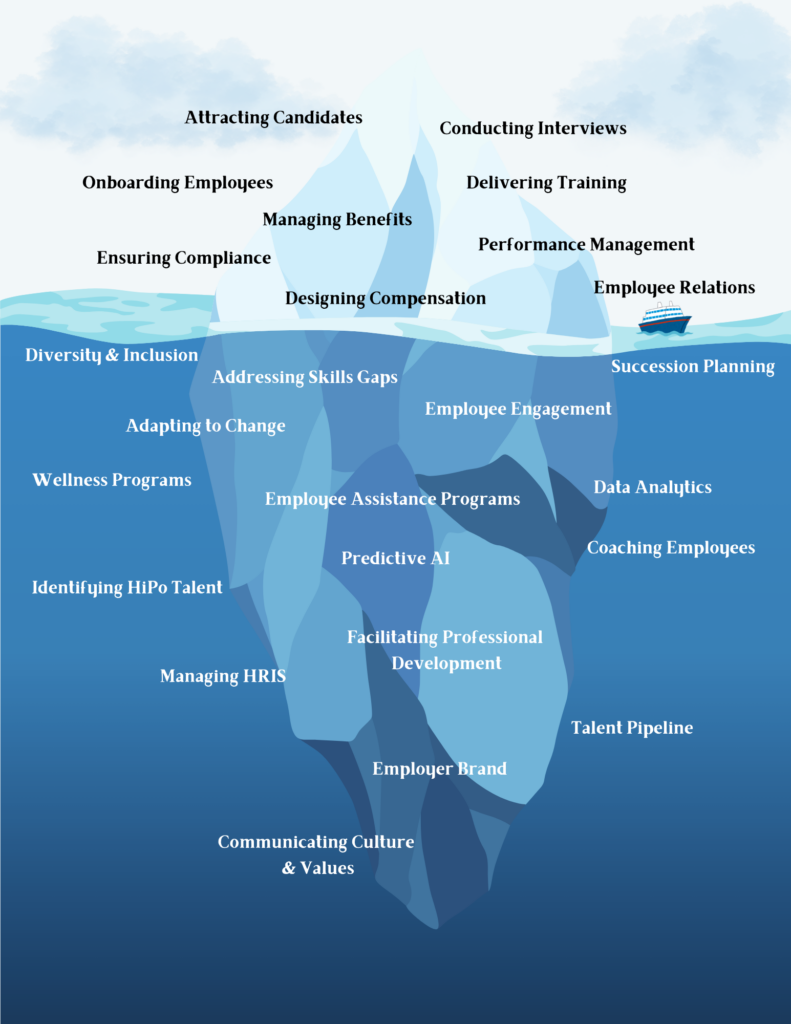
There are many monikers used to describe the Human Resources team: the People Team, Human Capital Management, People & Culture, Employee Experience, or the Partner Resources team. But if you want a sure fire way to get your People team cringing, use these three words to describe their team, a “”back office function.”
Human Resources (HR) has long been described as a back office function—a department that handles administrative tasks like payroll, hiring, and compliance. However, this outdated view underestimates HR’s strategic value and its integral role in driving organizational success.
Today, HR is more than just a support function; it is the backbone of company culture, a partner in operational efficiency, and a driver of competitive advantage.
HR Shapes Culture, and Culture Shapes Business Success
At the heart of every organization is its culture—a set of shared values, norms, and behaviors that dictate how work gets done and how employees interact. HR is the custodian of this culture, shaping it through policies, training, and leadership development. Why does this matter? Because culture dictates how a business allocates its resources, engages its workforce, and ultimately delivers value to its customers.
When HR fosters a culture of innovation, collaboration, and accountability, it creates an environment where employees feel empowered and aligned with the company’s goals. This alignment is key to ensuring every dollar spent on resources—whether it’s on talent acquisition, technology, or marketing—yields a higher return on investment.
Companies that fail to recognize HR’s role in culture often struggle with employee disengagement, high turnover rates, and a lack of alignment between their goals and their workforce. These issues are not only costly but also detrimental to long-term success.
How Business Operations Can partner with hr
For HR to move from the sidelines to the strategic forefront, other departments must see it as a partner rather than a siloed function. This is best championed by leadership and board members. Collaboration between HR and business operations can drive significant improvements in efficiency, innovation, and productivity.
- Change Management: Whether it’s implementing new technology, restructuring teams, or launching a new product, organizational changes are more successful when HR is involved. HR ensures employees are prepared, trained, and supported throughout the process.
- Talent Alignment: By working with HR, department heads can ensure they have the right people with the right skills in the right roles. This alignment reduces bottlenecks, improves team performance, and drives faster project completion.
- Data-Driven Decisions: Modern HR departments use data analytics to track employee engagement, retention, and performance. By sharing this data with other departments, HR can help leaders make informed decisions that improve overall operations.
The Misconception of HR Responsibilities
One of the reasons HR is often undervalued is the gap between what employees and leaders perceive as HR’s responsibilities and what the department is actually tasked with. Many see HR as a problem-solving unit—a place to go when something goes wrong, like workplace conflicts or compliance issues.
However, HR’s role extends far beyond firefighting. It encompasses talent strategy, employee development, organizational design, and even risk management. HR is responsible for creating systems and structures that enable employees to thrive and businesses to scale.
For example, consider recruitment. Many view it as a straightforward process of filling open positions. In reality, HR uses advanced tools and strategies to attract top talent, assess cultural fit, and predict long-term performance—all while ensuring diversity and inclusion are prioritized. By underestimating these responsibilities, businesses miss out on the full value HR can provide.

HR Responsibilities That Impact Productivity
HR’s impact on productivity is multifaceted, touching everything from onboarding to leadership development. Here are some key responsibilities that directly influence how efficiently an organization operates:
- Training and Development: A well-trained workforce is a productive one. HR is responsible for identifying skill gaps, designing training programs, and fostering continuous learning.
- Employee Engagement: Engaged employees are 21% more productive than their disengaged counterparts1. HR initiatives like recognition programs, wellness initiatives, and open communication channels play a crucial role in driving engagement.
- Performance Management: HR establishes performance metrics, facilitates regular feedback, and ensures employees understand how their work contributes to organizational goals. This clarity boosts motivation and efficiency.
- Streamlining Processes: By using HR tech solutions like automated payroll systems and performance tracking tools, HR reduces administrative burdens, freeing employees to focus on high-impact tasks.
The Consequences of Neglecting HR
Failing to involve HR in business decisions can lead to significant consequences. When HR is excluded, organizations often face:
- High Turnover Rates: Without HR’s input, businesses may make decisions that unintentionally harm employee satisfaction, leading to increased attrition. Replacing employees is not only costly but also disrupts team dynamics and slows progress.
- Compliance Risks: HR ensures businesses adhere to labor laws, safety standards, and ethical guidelines. Ignoring HR in these areas can result in legal issues, fines, and reputational damage.
- Missed Opportunities for Growth: HR identifies internal talent for promotions and leadership roles. Without their insights, businesses may overlook high-potential employees, leading to stagnation.
Involving HR early in decision-making processes ensures these pitfalls are avoided and positions the organization for sustainable growth.
HR as a Driver of Competitive Advantage
In today’s fast-paced business environment, competitive advantage is often tied to talent. The best products and services are created by teams that are motivated, skilled, and aligned with their organization’s mission. HR is uniquely positioned to build and nurture such teams.
Here’s how HR drives competitive advantage:
- Attracting Top Talent: HR’s recruitment strategies ensure the company brings in high-caliber candidates who fit the organizational culture and can drive innovation.
- Fostering Inclusion: Diverse teams are more innovative and better at solving complex problems. HR ensures the organization prioritizes diversity, equity, and inclusion (DEI), creating a more dynamic and competitive workforce.
- Building Resilience: Through succession planning, leadership development, and employee well-being initiatives, HR ensures the organization can adapt to challenges and seize opportunities.
- Enhancing Employer Branding: A strong employer brand attracts top talent and enhances customer trust. HR plays a key role in shaping this brand through employee advocacy and engagement initiatives.
The Future of HR: A Strategic Partner, Not a Back Office Function
To unlock the full potential of HR, organizations must shift their mindset. HR is not just an administrative necessity; it is a strategic partner that drives culture, productivity, and innovation.
Business leaders should actively involve HR in decision-making processes, recognize its contributions to operational efficiency, and invest in HR technologies and training. By doing so, they can create a workplace where employees thrive, customers are satisfied, and the organization outperforms its competitors.
HR’s transformation from a back-office function to a strategic core is not just a trend—it’s a necessity for businesses that want to succeed in the modern world.
Conclusion
Human Resources is no longer a function that works behind the scenes. It is an essential part of any business, driving culture, shaping strategy, and ensuring long-term success. By fully embracing HR’s capabilities and partnering with it across all levels of the organization, businesses can achieve greater efficiency, innovation, and competitive advantage.
Let’s stop relegating HR to the back office and start recognizing it as the powerhouse it truly is. To maximize the potential of your HR team, contact me today.
Note: This article was edited and refined with the assistance of AI.
- Nolan, T. (2017, December 21). The No. 1 Employee Benefit That No One’s Talking About. Gallup.com; Gallup. https://www.gallup.com/workplace/232955/no-employee-benefit-no-one-talking.aspx
↩︎